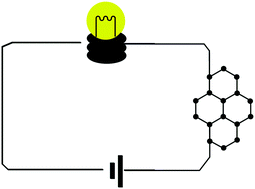Molecular graphs and molecular conduction: the d-omni-conductors†
Abstract
Ernzerhof's source-and-sink-potential (SSP) model for ballistic conduction in conjugated π systems predicts transmission of electrons through a two-wire device in terms of characteristic polynomials of the molecular graph and subgraphs based on the pattern of connections. We present here a complete classification of conduction properties of all molecular graphs within the SSP model. An omni-conductor/omni-insulator is a molecular graph that conducts/insulates at the Fermi level (zero of energy) for all connection patterns. In the new scheme, we define d-omni-conduction/insulation in terms of Fermi-level conduction/insulation for all devices with graph distance d between connections. This gives a natural generalisation to all graphs of the concept of near-omni-conduction/insulation previously defined for bipartite graphs only. Every molecular graph can be assigned to a nullity class and a compact code defining conduction behaviour; each graph has 0, 1, >1 zero eigenvalues (non-bonding molecular orbitals), and three letters drawn from {C, I, X} indicate conducting, insulating or mixed behaviour within the sets of devices with connection vertices at odd, even and zero distances d. Examples of graphs (in 28 cases chemical) are given for 35 of the 81 possible combinations of nullity and letter codes, and proofs of non-existence are given for 42 others, leaving only four cases open.



 Please wait while we load your content...
Please wait while we load your content...